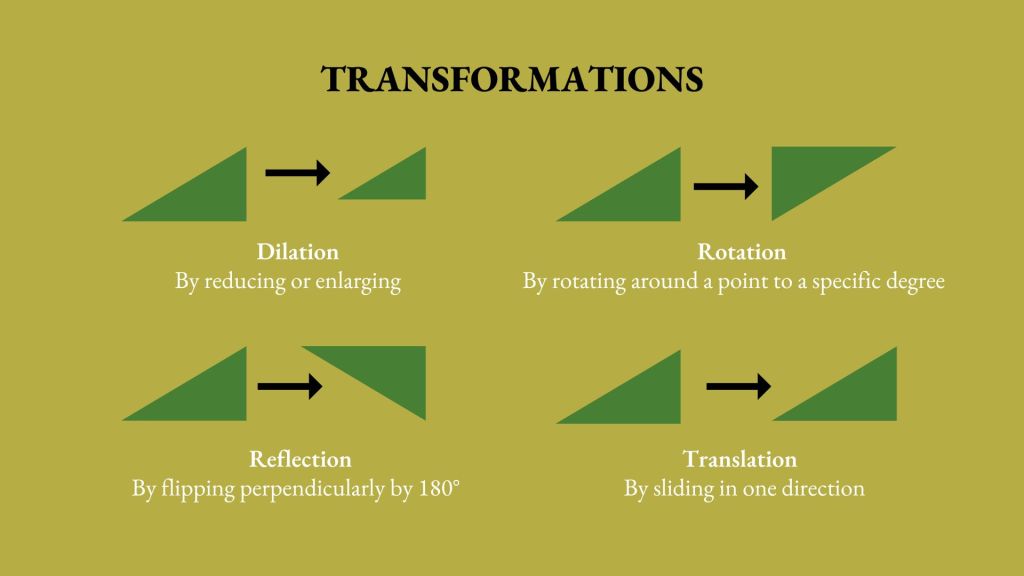Where we learn that the value of
transformational change is solely within
that which has been transformed.
Dear Diary,
Why hasn’t anyone noticed my transformation? Isn’t it obvious? It sure feels that way to me. I said I was going to pull myself together and move in a new direction and that’s exactly what I did. I even feel like I’m seeing things in a new way, it’s like I have a different perspective now.
I know, I know, at first glance, I probably seem like the same ol’ Ise. I’m not obtuse, I’ve still got my same ol’ right-angle. And who on earth would expect all my sides to have become equilateral already, especially in such a short amount of time. There’s some sort of saying about big change not happening overnight and I totally agree with that.
I do feel better than I have in awhile, though, so I guess… I guess it might just take some time for others to notice it about me.
Your friend, always and 4EVA,
Isosceles
I’m not obtuse, I’ve still got my same ol’ right-angle. And who on earth would expect all my sides to have become equilateral already, especially in such a short amount of time. There’s some sort of saying about big change not happening overnight and I totally agree with that.
I do feel better than I have in awhile, though, so I guess… I guess it might just take some time for others to notice it about me.
Your friend, always and 4EVA,
Isosceles
First off, lemmee give some deep appreciation to Ise for allowing me to share this very personal diary entry. 1920’s or 2020’s, teenagers being teenagers, amirite or what?
In case you don’t recall your elementary geometry, triangles – of all the basic shapes – have the most varieties of itself as well as the most properties. Triangles can be seen within other shapes and structures like rectangles and squares and even within circles to calculate their radius or, when in three-dimensions, a sphere’s internal distance from one of its sides to its other.
To quote philosopher Simone Weil:
For the Greeks the construction of similar triangles, which is the foundation of geometry, was a method of seeking proportions, and doubtless the construction of the right-angled triangle, a combination of similar triangles, was a method of seeking geometric or proportional means.
Weaving the World: Simone Weil on Science, Mathematics, and Love by Vance G. Morgan
pg. 106
Triangles in all their glory had popped back into my frame of reference recently because it has seemed like everyone is talking about transformations right now – and when I think about transformations in the math world I immediately think of triangles because they know a little something about that, as our friend Isosceles mentioned in her diary entry.
Transformations – in mathematics, as well as IRL – can get real intricate really quickly, especially when you venture out of the immediate 2D world into a vast 3D world where the math behind physics then begins to get involved. Sticking with two-dimensions absolutely serves us well, here.
A transformation is a general term for four specific ways to manipulate the shape and/or position of a point, a line, or geometric figure.
Wisconsin Department of Education
Triangles, especially right-angled triangles like our friend Isosceles, are useful when illustrating what these four common types of mathematical transformations look like. Think of these like a Before/After photo of a person, in the meme-vein of “How It Started/How It’s Going”.

We can easily associate human equivalents of these mathematical transformations, where Dilation might be about a person’s weight or hair color or some other obvious physical change, Reflection could be someone’s philosophical or political 180 degree flip “to the opposite side,” and Rotation would be the transformer’s varying degree of a different perspective towards the specific thing, that point that they are circling around.
The hardest one to externally ascertain, yet it is the most frequent type of transformation that occurs IRL, is Translation. Apparently, it’s a difficult one to externally identify in Isosceles’ world, too, since this is the type of transformation she was going through. Though the before/after illustration shows the beginning stage and end stage of a translation transformation, from an outside perspective there doesn’t appear to actually be any change.
Translation transformation is about moving in one direction, with a focus on changing one thing, its one position, but otherwise the same in all other identifiable ways. It isn’t that there’s a consideration of a new viewpoint to be made about something (like there is in a Rotation) nor is there an absolute night/day change occurring (like there is with a Reflection).
But that’s because the transformation appears to be mostly internal
and it might also be a slow snail’s pace crawl of movement to its new “location.”
Instead of the process being riddled by visual cues like someone having different eating habits than before, the change process is a bit more subtle and it may show up in moments of conversation – what is said, what is reacted to – on this road to the transformation’s ‘after’ landing spot. I encountered a lot of these transitional transformations in the workplace, especially with small teams who worked closely with each other, and I’ve seen it as well with family members and with long-time friends.
The way to acknowledge and support something or someone during a transitional transformation is that you need to get hyper-aware with your observation and listening skills.
The first step is to recognize the filters you have – and we all have ‘em – when we listen. The purpose of any type of filter is to not only keep specific things in, but to also keep other things out. So your (listening) filter that’s in place for a particular person that you’ve known for awhile, a filter that is hardwired by your opinions and experiences of that person, you have to get super conscious and acknowledge to yourself what it looks like when that particular listening filter is in use.
Essentially, if you have always known someone to be cynical, or someone who has always been negative, that’s all you can hear from them.
You may even be listening – waiting – to hear that cynicism, that negativity, from them at the detriment of not hearing the optimistic or positive comments that they may now (perhaps tentatively) say as they are in their process of transformation; more often than not, we can only hear what supports our belief about them.
If you hear someone speaking and your internal voice comments “I knew they were going to say something like that’ or ‘I know what that means” – congratulations, you’ve identified a hard-wired listening filter!
You see, it’s not the person who is working on themselves who has the most power in a conversation – it’s the person who is listening that has the power, because they have the power to acknowledge even the most baby-step of a change in someone’s transformation, the power to affirm that they notice transformation in the works, and the power to offer encouragement as they move steadily along that one direction, perhaps looking the same as they did before but ending up afterwards in a different place.
You know, I wasn’t going to use the following particular mathematical definition of transformation in this essay just because it is so mathy in its wording and you don’t have the time (nor probably the interest) to read a sentence 5 times in order to grasp its full meaning. But now, I’m seeing this definition![]() as good additional support to how we’re talking about this type of transformation.
as good additional support to how we’re talking about this type of transformation.
A process by which one figure, expression, or function is converted into another that is equivalent in some important respect but is differently expressed or represented.
New Oxford American Dictionary
That part there about “…being converted into another
that is equivalent in some important respect” – that really resonates.
I see it as a call-out that the figure (person) at their ‘after’ stage is identifiably similar from what they were like before. A transformation isn’t about becoming unrecognizable or even starting over from scratch. There’s some core nugget, some core identity, that will not be changed or erased.
On the topic of the power in transformation, mathematician Frances Su calls it “the best kind of power, both of things and of people.”
People make stuff and change their surroundings. Mathematicians have a nice word for this: transformation. Just as mathematical functions transform the things they operate on, creatures of the world are transforming their environments. The universe itself is in a constant state of transformation.
Mathematics for Human Flourishing by Francis Su
pg. 130
Yup.
Thanks math, you’re the best.

